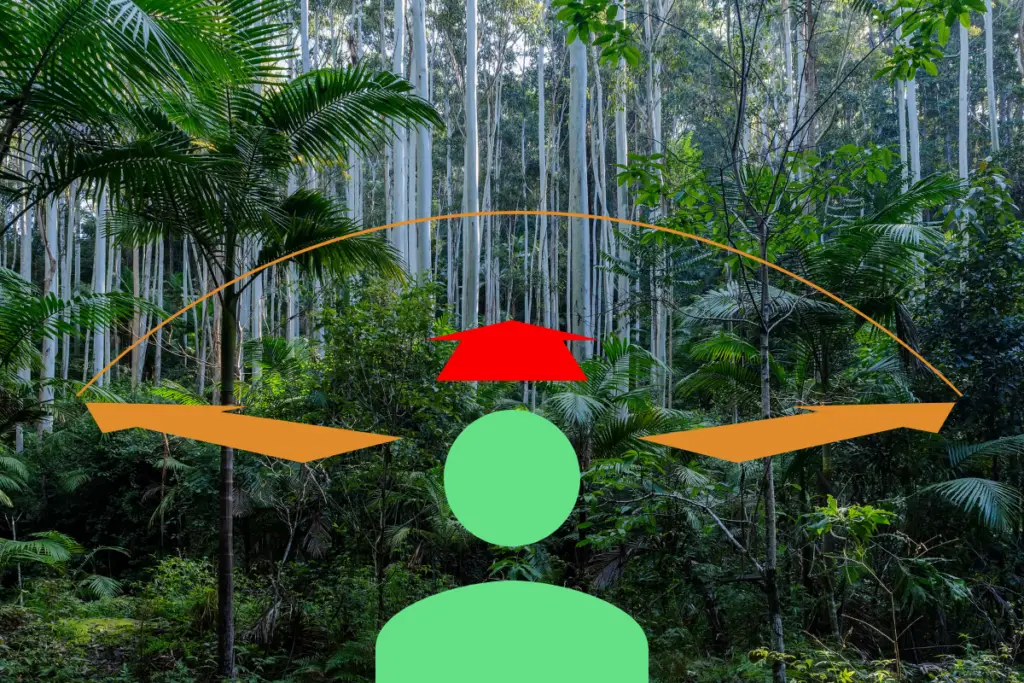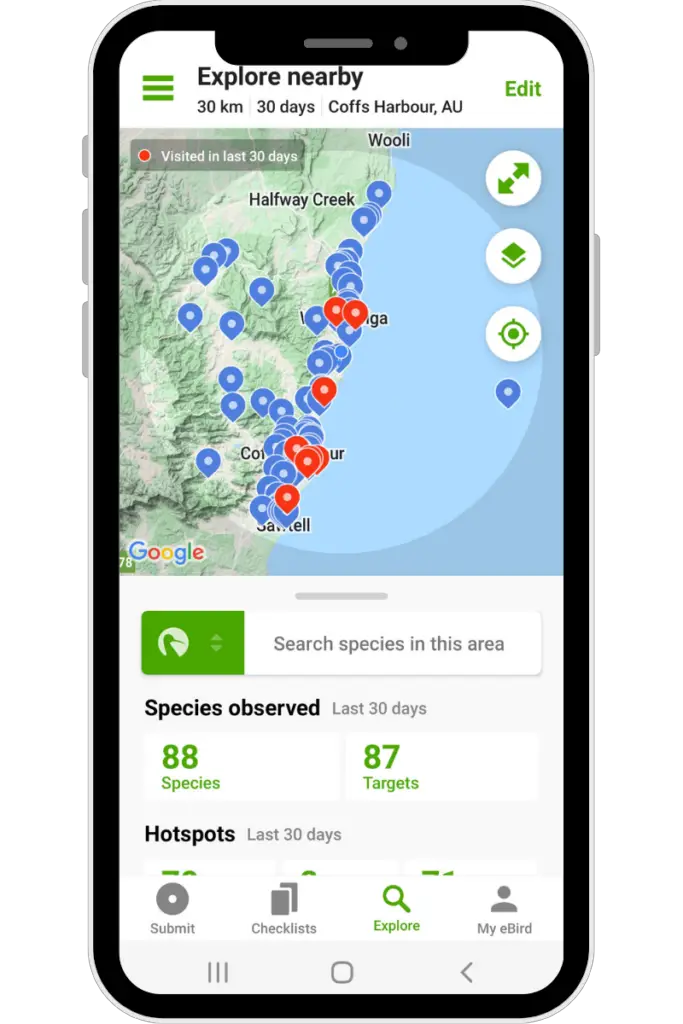Bird photography and birdwatching are fabulous ways to spend your time. Birds can provide hours and hours of fascination and entertainment but you have to find them first. I have watched and photographed birds for over 8 years and in this article, I will give you 10 proven ways I have used to find birds to photograph or watch.
As an Amazon Associate, I earn from qualifying purchases. Birdwatch World earns commissions from Amazon and similar affiliate programs from any purchases made via links in this article.
1. Find Water
Just like us, birds need water to survive. If you want to find some birds; first find some water.

This can be any body of water; the ocean, a lake, a river, a pond, a birdbath, a fountain…even a puddle on the ground. It will help if there are also some trees or bushes near the water so that the birds can find some cover if they need it.
Even if you live in a large city, you should be able to find some kind of body of water that will attract birds. All you have to do then is find a nice spot to sit or stand where you are not going to disturb the birds and enjoy them.
Discover the gear you will need to birdwatch in this article here on my blog.
2. Find Plants
I already touched on this in the first step above but finding some plants will lead you to birds also.

Birds not only consume all kinds of plant life but they also eat the insects that it attracts. They will also use vegetation for cover from predators and build their nests in it too. Do not ever approach the nest site of any bird as you may scare them away and cause them to abandon the nest.
Some places where you can find plants and increase your chances of finding some birds are:
- Parks
- Gardens
- Forests
- Rivers
- Swamps
- Grasslands
- Reed beds
- Orchards
- Agricultural areas
- Rainforests
- Nature Reserves
- Woodlands
- Thickets
- Scrub
- Hedgerows
3. Visit Parks Or Gardens
This step combines the first two. By seeking out a park or garden, you are likely to find both plants and water and therefore birds that will be attracted to those things.

The bonus of bird photography or birdwatching in a park or garden that people frequently visit is that the birdlife will be used to humans. This means that you will be able to approach most species more easily to get a better look or a closer photograph.
4. Listen For Bird Sounds
Once you get to a park, garden, or some other area where you expect to find birds, the next thing to do is listen.

Aside from their lovely singing voices, birds make a lot of other noises when they move about in their environment. While you search for birds to photograph or watch, make sure you tune in to all the sounds happening around you.
When you do hear a bird singing or rustling about in the undergrowth, don’t rush off toward it as you may scare it away. Stand still and continue to listen. Figure out the direction the sound is coming from and approach very slowly.
Eventually, you may get sight of the bird that is making the noise. There will also be times when you just can’t locate the bird that is making the sound but just be thankful that you have heard it and move on.

5. Stand Still And Look For Movement
When you are walking or moving about, it can be hard to see something as small as a bird because everything in your vision is moving about. You will have much less luck noticing birds this way. I suggest using a technique I employ most times I go out birding.
If you are in dense vegetation such as a forest or scrub, the best thing to do is to stand completely still. Pick a spot directly ahead of you and stare toward it while staying focused on your peripheral vision. Doing this assures that the landscape is not moving about so anything that moves will stand out to you.

This is a great technique to use when you have heard a bird in the bushes but you just can’t see it. Be patient, remain still, and fix your gaze. If the bird moves, you should see it.
Learn how to birdwatch from home in this article here.
6. Stand Still And Be Patient
Like the previous step, this one involves you remaining still. This time, however, we are less concerned with seeking out the birds and more focused on letting them come to you.

If you stand or sit completely still and quiet, you become – as far as the birds are concerned – a part of the landscape. You are much less of a threat to them and they will be more likely to approach you than if you were moving about.
This technique works for the more skittish birds too, those that do not often show themselves in the company of humans.
You can also use this method at sunrise. Get yourself to a location before sunrise when it’s still relatively dark and pick a spot to set yourself up in. Stay still and quiet until the sun rises.

When the birds come out for their morning feed, they will be comfortable around you more so than if you show up and waltz into their territory making loads of noise.
7. Use Binoculars or a Monocular
This may seem obvious but using a pair of binoculars or a monocular can help you find birds. You can also do this from a further distance from the birds so there is less chance you might scare them away.

A good pair of 8 X 42 binoculars can help you to find birds in trees or scrub at close range too. They are also easy to carry around with you. My recommendation for a quality pair of binoculars at a reasonable price is the Nikon Prostaff 3S 8 X 42. They are the binoculars I use and I’ve found them to be great for the price. Click/tap the image below to check the latest prices from Amazon, Adorama, and eBay:
Australian readers can check the price of the Nikon Prostaff 3S from Catch.com.au at this link.
A monocular will take up less space in your backpack and the particular one I am going to recommend also comes with a smartphone holder so you can take pictures and videos of the birds you see.
This Gosky Titan Monocular has 12 X 50 magnification which means it will make things appear 12 times closer. The 50 is a measurement of the diameter of the front lens in millimeters. A 50mm objective lens will let in loads of light, meaning this monocular will perform well in low-light situations.
Please keep in mind that I have not used this product but it gets great reviews on Amazon. I plan on purchasing one soon to try it out.
8. Learn About Birds
A great way to figure out where you can find particular birds is to learn as much as you can about them.

Learning about their diets, when and where they migrate, their behaviors, where and when they nest, and anything else can help you be in the right place at the right time. Again, I will stress that you should never approach the nest site of any bird as you may scare them away and cause them to abandon the nest.
Some great places to begin learning about birds are:
- Google search
- Birds Of The World
- Any of the Sibley Bird Guide Books
- Find A Bird page on the RSPB website (UK Birds)
- Bird apps for your smartphone (we’ll look at some of these in the next step)
You will find a heap of articles about all kinds of birds right here.
9. Use Birding Apps
A bird app for your smartphone is the go-anywhere option to help you find the birds you are looking for. Some apps have sighting pages that update live, so you know when and where someone has seen a particular bird.

The best app for this is eBird by The Cornell Lab Of Ornithology. This is a free worldwide resource for recording bird sightings and it is used by hundreds of thousands of people across the planet.
The app will give you a list of the most likely species in your area for the time of year, so you know exactly what you might encounter. It will also track how far you’ve traveled and how long you’ve spent birding!
Another great birding app, also from The Cornell Lab Of Ornithology, is the Merlin Bird ID app. You can download various packs for birds all across the globe and explore information about each species. You can also create a life list and record the birds you see over your lifetime and the ones you would like to see.

Both of the above apps are available for both iPhone and Android and are excellent tools to help you find and identify birds.
10. Join Facebook Birding Groups
If you are a Facebook user, this can be a really easy way to find out what birds you can find where. I am a member of around 5 birding groups in my local area.

On more than one occasion, I have used them to get recommendations about where to find certain species. Members of the groups will post photos of birds that I have wanted to see and I simply comment to ask exactly where they saw them.
This is also a great way to meet local people who love birdwatching or bird photography.
Summary
Try out each of the steps above to find birds that you can watch or photograph.

I find that birdwatching and bird photography requires two things: patience and understanding. You need to be patient and realize that the birds will show up eventually. You also need to understand that they are wild animals, unpredictable, and not confined to the same time constraints that we have.
Enjoy your birdwatching and thank you for reading this article today.


